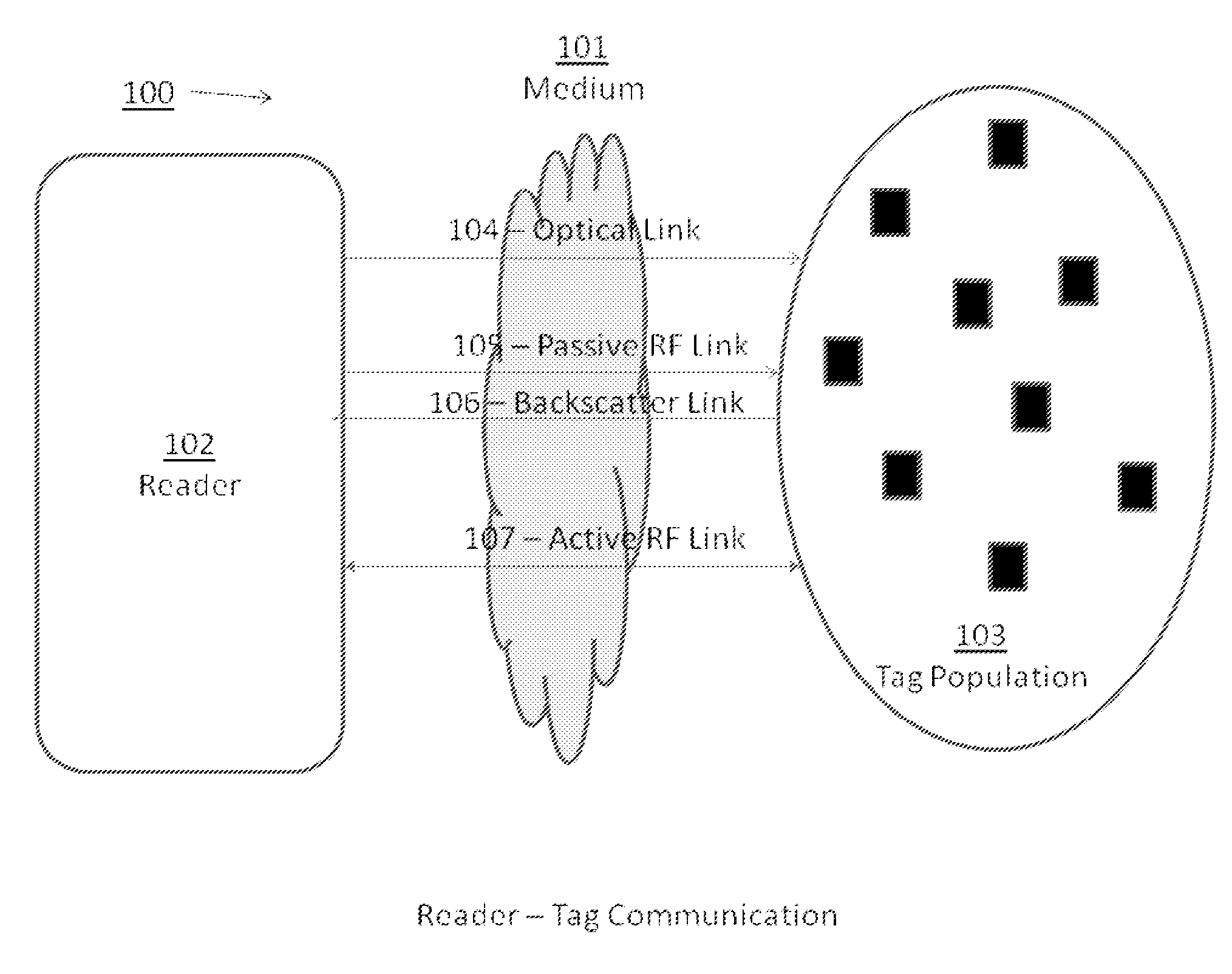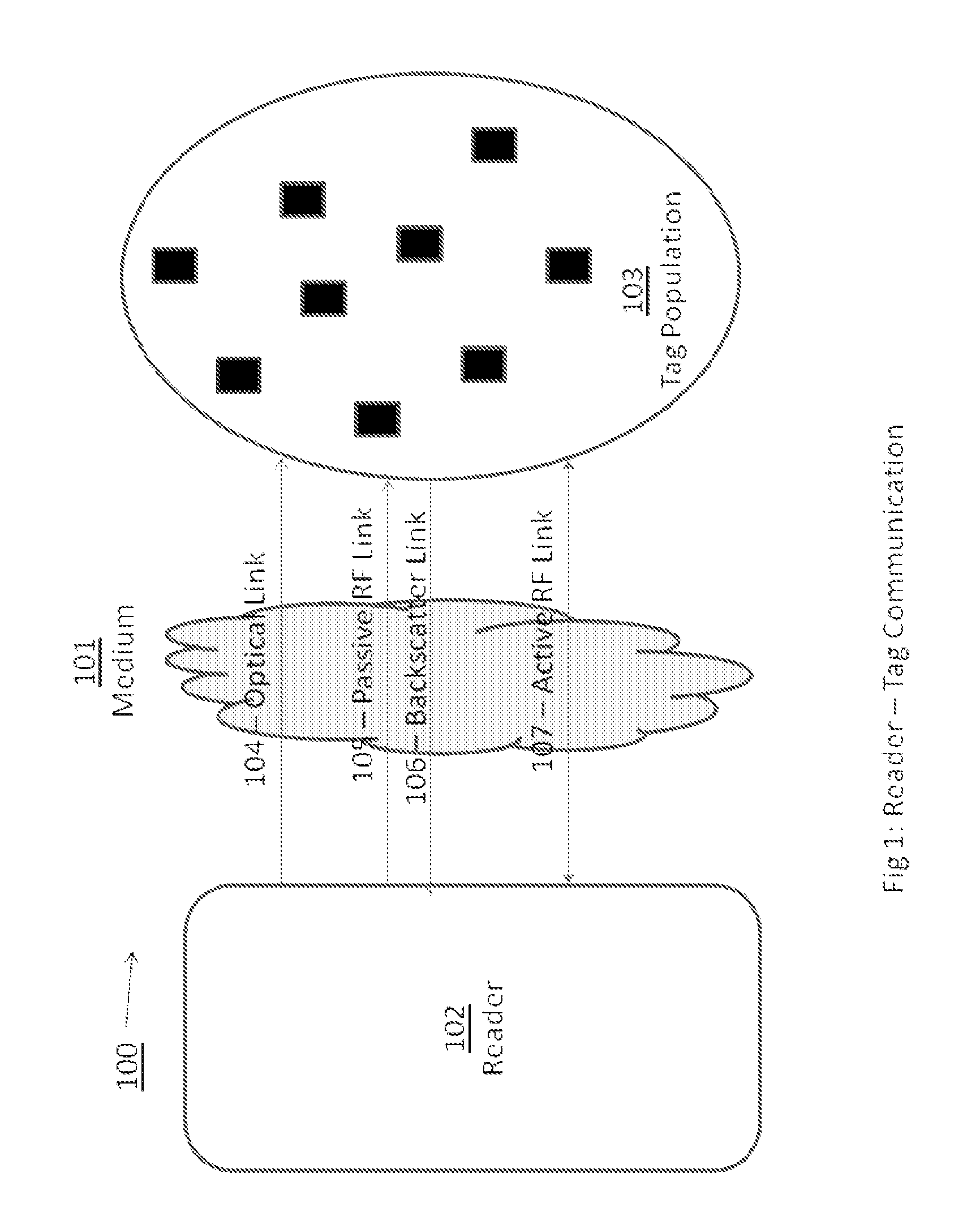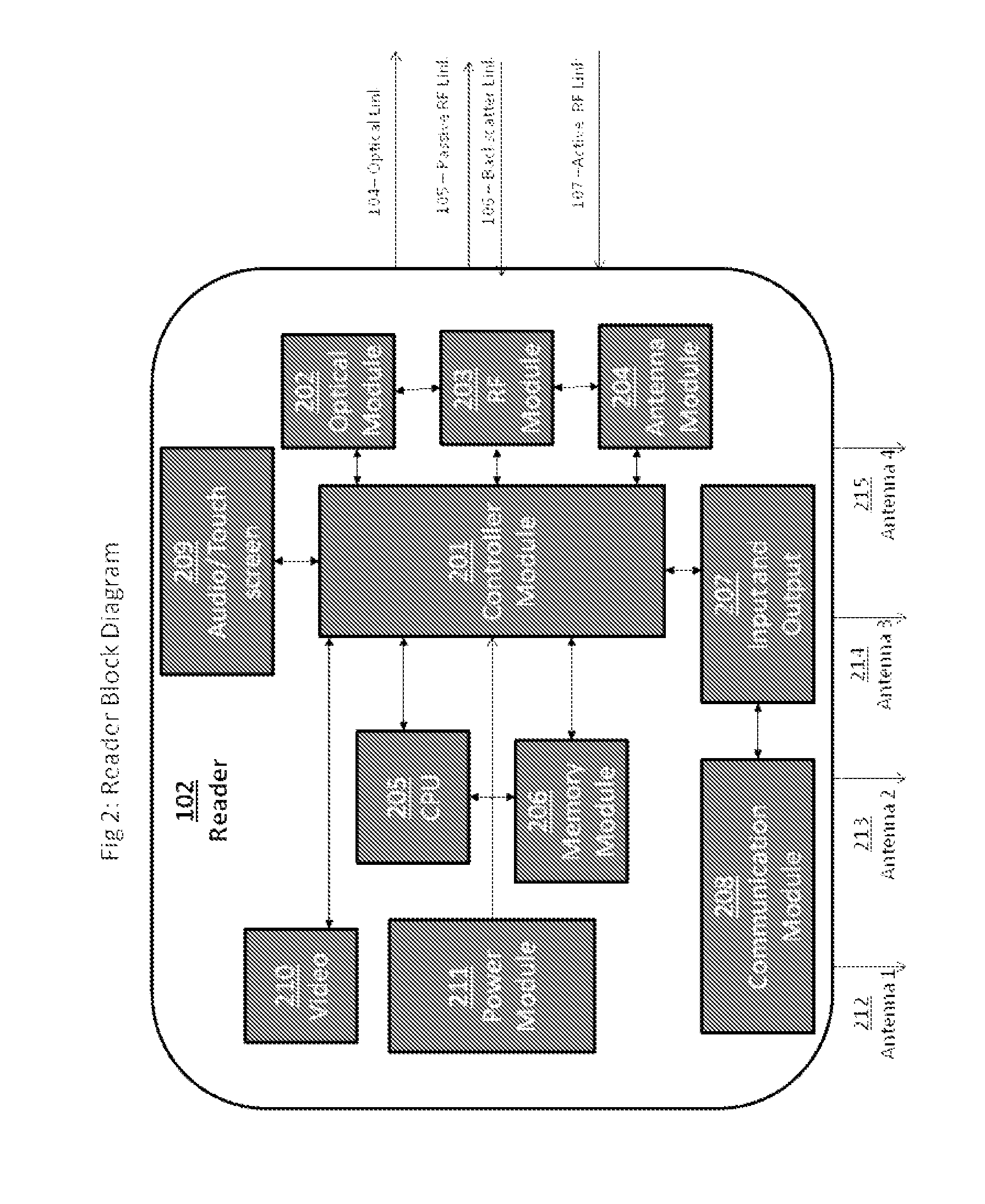Isolating RFID Reader
a technology of rfid reader and reader, which is applied in the field of automatic identification and data collection, can solve the problems of not being able to identify multiple tags over a long distance or about a broad area, the reader does not have any control over which tags it can wake up, and cannot identify a single item among a group of items within the field of radio effectiveness, etc., to achieve the effect of long transmit distan
- Summary
- Abstract
- Description
- Claims
- Application Information
AI Technical Summary
Benefits of technology
Problems solved by technology
Method used
Image
Examples
Embodiment Construction
[0025]FIG. 1 is an illustrative example of an environment 100 in which an automatic identification and data collection system may operate. The system includes a reader 102 and a population of tags 103 that communicate with one another through one or more mediums 101 and using communication links 104,105,106 and 107. While described herein as wireless links using radio-frequency signals, these links are illustrative only and may include other links such as wired, cellular, optical and others. The medium can be free space or some other medium capable of supporting communication between the reader 102 and the tag population 103. In one embodiment the medium may also carry reflected radio waves and communicate over a variety of frequency ranges.
[0026]The reader 102 transmits data (and, in some cases, power) to the tag population 103 using an optical carrier wave. The beam of light may be in a visible or invisible spectrum, and the data is typically modulated onto the optical carrier wav...
PUM
 Login to View More
Login to View More Abstract
Description
Claims
Application Information
 Login to View More
Login to View More - R&D
- Intellectual Property
- Life Sciences
- Materials
- Tech Scout
- Unparalleled Data Quality
- Higher Quality Content
- 60% Fewer Hallucinations
Browse by: Latest US Patents, China's latest patents, Technical Efficacy Thesaurus, Application Domain, Technology Topic, Popular Technical Reports.
© 2025 PatSnap. All rights reserved.Legal|Privacy policy|Modern Slavery Act Transparency Statement|Sitemap|About US| Contact US: help@patsnap.com



